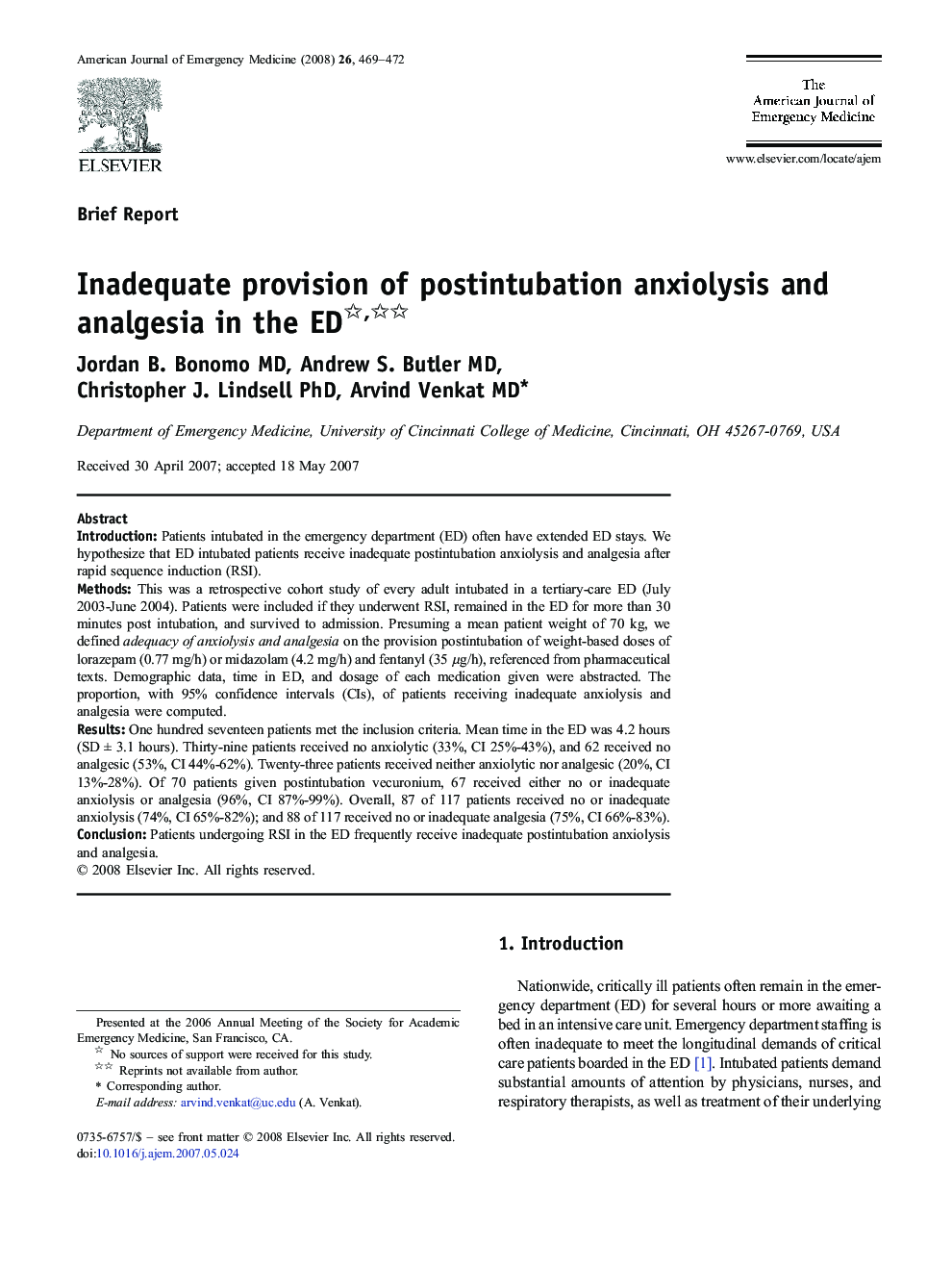| Article ID | Journal | Published Year | Pages | File Type |
|---|---|---|---|---|
| 3227508 | The American Journal of Emergency Medicine | 2008 | 4 Pages |
IntroductionPatients intubated in the emergency department (ED) often have extended ED stays. We hypothesize that ED intubated patients receive inadequate postintubation anxiolysis and analgesia after rapid sequence induction (RSI).MethodsThis was a retrospective cohort study of every adult intubated in a tertiary-care ED (July 2003-June 2004). Patients were included if they underwent RSI, remained in the ED for more than 30 minutes post intubation, and survived to admission. Presuming a mean patient weight of 70 kg, we defined adequacy of anxiolysis and analgesia on the provision postintubation of weight-based doses of lorazepam (0.77 mg/h) or midazolam (4.2 mg/h) and fentanyl (35 μg/h), referenced from pharmaceutical texts. Demographic data, time in ED, and dosage of each medication given were abstracted. The proportion, with 95% confidence intervals (CIs), of patients receiving inadequate anxiolysis and analgesia were computed.ResultsOne hundred seventeen patients met the inclusion criteria. Mean time in the ED was 4.2 hours (SD ± 3.1 hours). Thirty-nine patients received no anxiolytic (33%, CI 25%-43%), and 62 received no analgesic (53%, CI 44%-62%). Twenty-three patients received neither anxiolytic nor analgesic (20%, CI 13%-28%). Of 70 patients given postintubation vecuronium, 67 received either no or inadequate anxiolysis or analgesia (96%, CI 87%-99%). Overall, 87 of 117 patients received no or inadequate anxiolysis (74%, CI 65%-82%); and 88 of 117 received no or inadequate analgesia (75%, CI 66%-83%).ConclusionPatients undergoing RSI in the ED frequently receive inadequate postintubation anxiolysis and analgesia.
